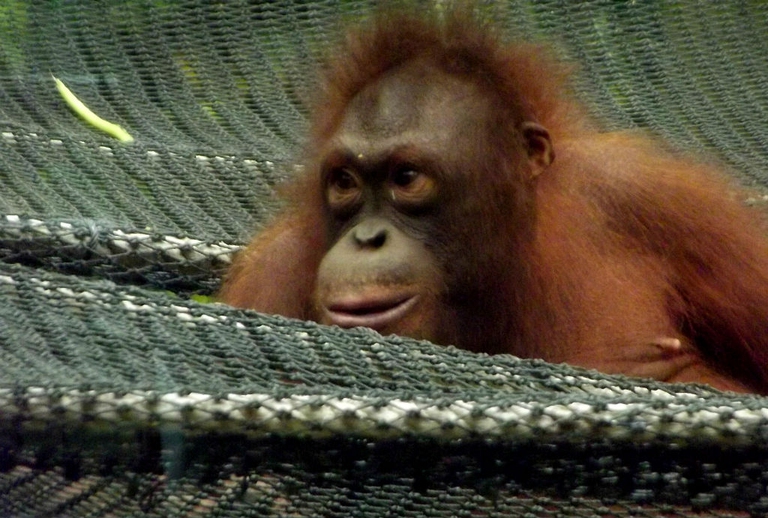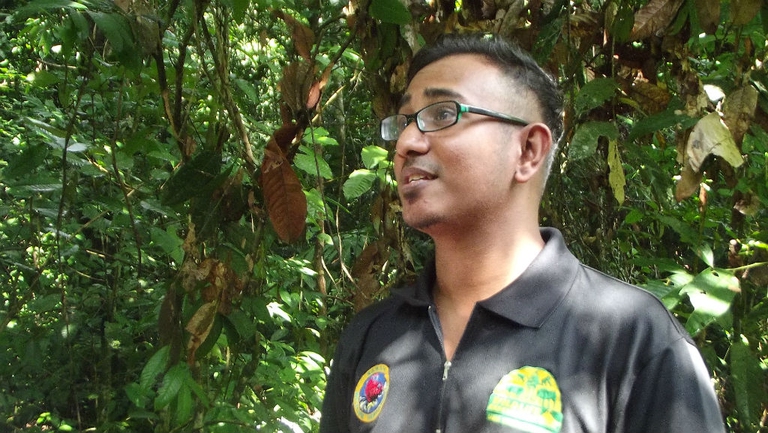
Our species took its first steps in a world covered in trees. Today, forests offer us sustenance, shelter, and clean the air that we breathe.
The Sepilok Orangutan Rehabilitation Centre is located at the edge of the Kabili Sepilok Forest Reserve in Sabah, Malaysia. Here, orangutans (Pongo pygmaeus) orphaned because of hunting and habitat loss have been saved, treated and rehabilitated since 1964. All around the centre vegetation is thick and the forest shows itself in all its magnificence.
The Sepilok Orangutan Rehabilitation Centre is located at the edge of the Kabili Sepilok Forest Reserve in Sabah, Malaysia. Here, orangutans (Pongo pygmaeus) orphaned because of hunting and habitat loss have been saved, treated and rehabilitated since 1964.
All around the centre vegetation is thick and the forest shows itself in all its magnificence. After all, this is Borneo, one of our planet’s most important lungs. Trees’ foliage towers above everything, forming a green and impenetrable wall. Here lies the reserve, home to 60 to 80 orangutans who will be reintroduced into the wild after a period of rehabilitation. The 43-square-kilometre-wide reserve is also home to macaques, proboscis monkeys, and Malaysian bears.
The first time you come into contact with an animal you’ve only seen and studied in books, you’re left bewildered. Its face, movements and gazes are extremely similar to humans’, and when a 2-year-old female orangutan kicks because she doesn’t want to return to her designated area, she looks just like a kid complaining that they don’t want to go home. It’s no coincidence that from an evolutionary and biological point of view these primates and Homo sapiens are closely linked. Currently, the centre is home to about 20 baby orangutans (1 to 2 years old). “We receive young individuals, as the older ones often can’t recover properly,” says Pakee Raj, 25, one of the centres’ two veterinarians.
“Most of the animals are brought here because their mother was killed or because they were abandoned as she is no longer able to look after them”. Baby orangutans live with their mothers up to the age of 8, while learning to get food, build nests and climb trees. Despite the fact that orangutans are a protected species, “baby orangutans are captured, domesticated and kept as pets,” says Pakee. Therefore, the centre helps them survive in the wild and trains them until they fully recover their relationship with the forest.
“We create groups made of 4-5 individuals, where older ones teach the younger ones,” the veterinary explains. “Once the rehabilitation process, which could last up to 8 years, has ended we reintroduce orangutans about 45 kilometres from the centre, later releasing them in the wild for good a hundred kilometres away”.
Over the past few years, orangutans arriving to the centre have been fewer and fewer. This is a sign that conservation policies, education and awareness campaigns along with a crackdown carried out by the Malaysian government actually work. Since the centre first opened hundreds of orangutans have been reintroduced into the forest. “Some of them sometimes return, but just to eat together with their fellows,” says Pakee.
Siamo anche su WhatsApp. Segui il canale ufficiale LifeGate per restare aggiornata, aggiornato sulle ultime notizie e sulle nostre attività.
![]()
Quest'opera è distribuita con Licenza Creative Commons Attribuzione - Non commerciale - Non opere derivate 4.0 Internazionale.
Our species took its first steps in a world covered in trees. Today, forests offer us sustenance, shelter, and clean the air that we breathe.
Poachers in Africa are encroaching on wildlife land and killing rhinos in travel hot spots now devoid of visitors due to the coronavirus pandemic.
Actor and environmental activist Leonardo DiCaprio has contributed two million dollars to a fund to protect Virunga National Park in Congo from threats such as terrorism, the coronavirus and poaching.
For the first time in seventeen years, Iceland’s two main whaling companies won’t resume whale hunting. The announcement concerns this year’s season but could carry into the future.
The relationship between the coronavirus and wildlife is complex: while the pandemic may lead to a reduction in the illegal trade in wild animals, it may also encourage it in other respects.
The largest coral reef in the world is severely threatened by climate change, but researchers are developing strategies that could contribute to saving the Great Barrier Reef.
NGO Free the Bears has opened a mountain sanctuary for moon bears in Laos. With the government’s help, it aims to close all bile farms by 2022.
Seychelles have extended its marine protected area, which now covers over 400,000 square kilometres, an area larger than Germany.
The tapir was reintroduced into Brazil’s Atlantic Forest, the country’s most at-risk ecosystem. The species can play a key role in the forest’s recovery.










